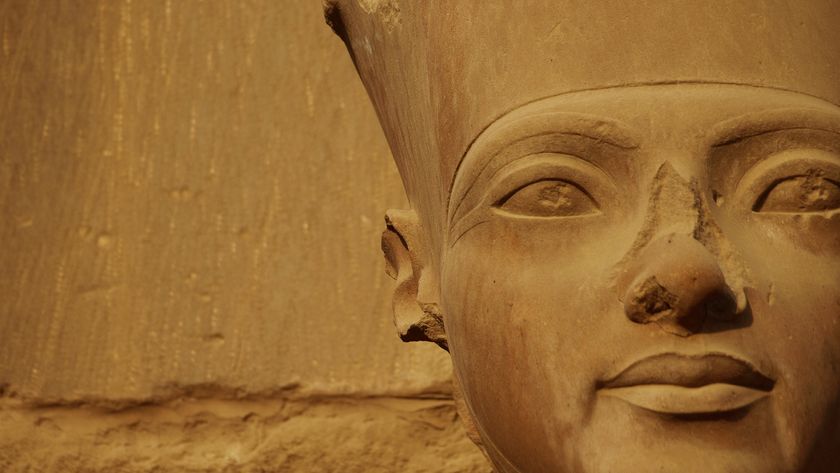Nicolas Cage to Return Dino Skull to Mongolia

It's been a long, strange journey for the skull of a predatory dinosaur — from Late Cretaceous Asia, where the dinosaur once roamed; to an auction block on Fifth Avenue in Manhattan, where the skull was sold anonymously in 2007 by the Beverly Hills art gallery I.M. Chait; to actor Nicolas Cage, later confirmed by his publicist to have bought the fossil from the gallery, according to The New York Times; and now, back to Mongolia.
The skull's original owner 70 million years ago was a Tyrannosaurus bataar (also called Tarbosaurus bataar), a large predatory dinosaur that closely resembled its North American cousin Tyrannosaurus rex. But officials questioned whether the skull's most recent owners had obtained the skull legally, according to a Dec. 16 statement released by the U.S. Attorney's Office for the Southern District of New York.
The statement announced the filing of a civil forfeiture complaint on behalf of the U.S. Attorney's Office and Homeland Security Investigations, to return the skull to its country of origin, saying that the skull was unlawfully taken from Mongolia's Gobi Desert and illegally brought into the United States. [Images: A Rare Tyrannosaurus bataar Travels from Auction to Courtroom]
Cage was not named in the statement, which merely confirmed that the "current owner" of the so-called "Bataar Skull" consented to its return, after hearing of the fossil's origins and the questionable circumstances surrounding its import and sale.
However, The New York Times did mention the actor directly, reporting on Dec. 22 that Cage bought the skull at the 2007 auction for $276,000, and agreed to return it to the Mongolian government after conferring with representatives from the Department of Homeland Security.
According to the statement, the skull was described at the auction as "native to the 'Eurasian continent,'" without specifically naming Mongolia. But fossils of Tyrannosaurus bataar have been found only in Mongolia, in one location in the Gobi Desert, paleontologists have told Live Science.
And Mongolian law states that "items of historical, cultural or scientific value" found on — or buried in — Mongolian soil remain the property of the state.
Sign up for the Live Science daily newsletter now
Get the world’s most fascinating discoveries delivered straight to your inbox.
The voluntary return of an important cultural artifact is a victory for Mongolia in an ongoing struggle to track and recover "looted dinosaur fossils," as described in the statement. Since 2012, the U.S. Attorney's Office for the Southern District of New York has worked to return illegally obtained fossils. Alongside the Bataar Skull, the office's success stories include three complete T. bataar skeletons, and at least a dozen fossil skeletons of other dinosaur species.
Unfortunately, the office's work is far from over. Preet Bharara, Manhattan U.S. attorney, said in a statement, "Together with our law enforcement partners, we will continue to pursue opportunities to right the wrongs committed when priceless artifacts are stolen.”
Follow Mindy Weisberger on Twitter and Google+. Follow us @livescience, Facebook & Google+. Original article on Live Science.

Mindy Weisberger is an editor at Scholastic and a former Live Science channel editor and senior writer. She has reported on general science, covering climate change, paleontology, biology and space. Mindy studied film at Columbia University; prior to Live Science she produced, wrote and directed media for the American Museum of Natural History in New York City. Her videos about dinosaurs, astrophysics, biodiversity and evolution appear in museums and science centers worldwide, earning awards such as the CINE Golden Eagle and the Communicator Award of Excellence. Her writing has also appeared in Scientific American, The Washington Post and How It Works Magazine. Her book "Rise of the Zombie Bugs: The Surprising Science of Parasitic Mind Control" will be published in spring 2025 by Johns Hopkins University Press.












